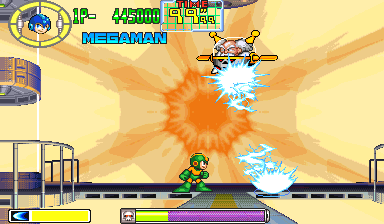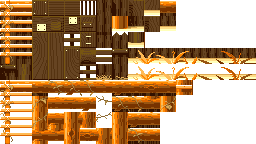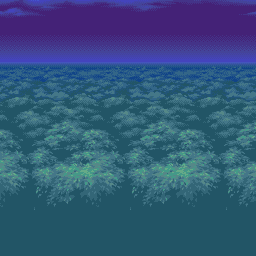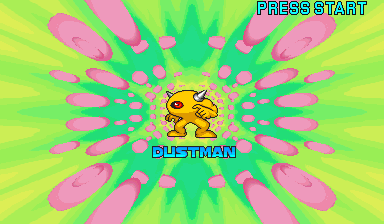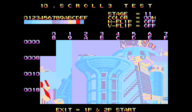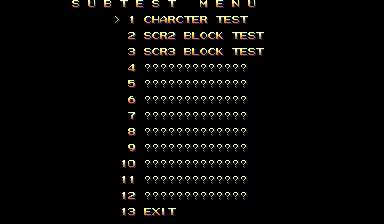Mega Man: The Power Battle
| Mega Man: The Power Battle |
|---|
|
Also known as: Rockman: The Power Battle (JP)
|
| To do: Does the CPS1 version of the game contain CPS2 decryption code, just like the CPS Changer version of Street Fighter Alpha supposedly had? |
Dr. Wily just gives up on the whole "themed levels" thing and sends reused Robot Masters from Mega Man 1-7 to deal with the blue bomber, Proto Man and Bass in a boss rush battle.
Contents
Sub-Page
| Unused Animations Graphics drawn for the game as well as those carried over from other titles were left in the final release. |
Unused Enemies
In the final game, Plant Man drops enemy flowers and VAN Pookin throws Batton M48s. However, there was supposed to have way more enemies like in Mega Man 2: The Power Fighters but the majority aren't used. Their graphics are still in the ROM, as are their palettes (stored in slots 16 to 18), which are different in each game mode.
General
Properide
Palette ID: 18
Possible Boss: Unknown
Unused in The Power Fighters.
Mega Man 1-2
DeluPipi
Palette ID: 17
Possible Boss: Unknown
Used by Air Man in The Power Fighters.
Mettaur
Palette ID: 16
Possible Boss: Guts Man
Used by Guts Man in The Power Fighters.
Mega Man 3-6
Kaminari Kogoro
Palette ID: 16
Possible Boss: Gyro Man
Used by Elec Man in The Power Fighters.
Kerone
Palette ID: 17
Possible Boss: Plant Man
Used by Stone Man & Shadow Man in The Power Fighters.
Mega Man 7
Petaforce
Palette ID: 16
Possible Boss: Cloud Man
Used by Cut Man & Gemini Man in The Power Fighters.
Turbo Roader
Palette ID: 17
Possible Boss: Turbo Man
Unused in The Power Fighters.
Unused Helpers
Each of the playable characters has an unused "helper" weapon. These were later implemented in The Power Fighters with modified versions of the icons on the left. There are also three temp icons (Rush, Beat, Gospel) seen on the right that don't seem to have palettes anymore: These are the best matches available.
Rush
Rush seems to have functioned identically to his appearance in the second arcade game, though he doesn't have an animation for walking yet. His Rush Jet sprite is also slightly different.
Beat
Beat's sprite was completely redrawn for The Power Fighters. Here, it's directly based on his appearance in Mega Man 7. The panicked animation can only be found in this game.
Treble
Treble is by far the most complicated of the three helper characters. He has a large number of different animations and poses.
Fortunately, almost all of Treble's animations here were used in The Power Fighters. However, the second jumping animation was not.
The flames around Treble on his charge attack have three frames of animation here, but only two frames in the second game.
The last set of frames. The second one doesn't appear in The Power Fighters and suggests that it was possible for Treble to take damage.
A projectile from Treble. The shots in The Power Fighters are different and more detailed.
Unused Enemy Attacks
By manipulating the game RAM, it's possible to see a few boss attacks that were removed before the game was completed.
Cut Man
| Afterimages | Rolling Cutters |
|---|---|
 |
 |
Set RAM address FFDA05 to 10 and FFDA06 to 00 to see this attack. Cutman jumps in the air, leaving a trail of afterimages, and eventually attacks the player by firing 8(!) Rolling Cutters at once.
Wily Saucer
The Wily Saucer has 5 attacks, none of which are used! The final version has no real attacks; just moving up and down.
Set RAM address FFD905 to the given action ID and FFD906 to 00 to see these attacks.
Action ID: 0C
An electric cord is attached to one of the saucers. After rotating counterclockwise two times the cord is fired at the player. It's likely that the second saucer is supposed to be tethered to the other side of the cord, but the shuttle just moves up and down instead.
Action ID: 08
Wily teleports to one side of the screen, then fires a continuous thunderbolt from the bottom of this saucer as he sweeps the screen.
| Energy ball | Bouncy energy ball |
|---|---|
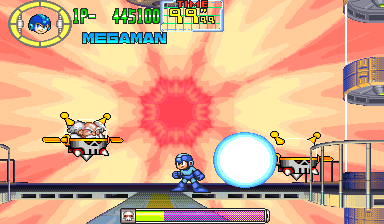 |
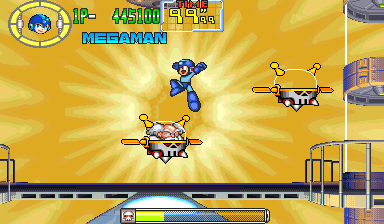 |
Action ID: 06
Dr. Wily fires a large energy ball. This ball bounces across the screen, disappearing on the second bounce.
Action ID: 04
Three small energy balls are fired at the player.
Unused Items
All bonus items were dropped from the final version.
Capsules
Small and large pick-ups for refilling the life energy on the left and for the weapon energy on the right, these appear in most Mega Man games. Not this one, though. In the game's current form, these would be pretty pointless, as the life and weapon meters are refilled after stages. However, The Power Fighters reintroduced these pick-ups and allows the energy and weapon to be refilled during the battle, suggesting that doing those were going to be possible here too.
Miscellaneous
Other power-ups: An Energy Tank (no appropriate palette exists in the ROM), a Weapon Tank, and...a large bolt? The first two have obvious purposes, but bolts are usually used as currency in Mega Man games. Perhaps, similar to other Capcom games, this game once had a shop.
A green orb, similar to the pink health bonuses given at the end of a stage. This would have been either a weapon pickup (again, redundant in the final game), or a larger health bonus. They may also have been a bonus item for points, much like the orbs dropped by enemies in the first Mega Man title.
Other Unused Graphics
Graphics for the results screen at the end of a stage for Capsule bonuses (which, if you've been paying attention so far, aren't in the game anymore) and Enemy, which despite there still being while fighting Plant Man and VAN Pookin, it probably would have been redundant and so it isn't used.
Should have appeared above the weapon meter, but doesn't.
The top of this machine in the Wily Fortress is technically used, but it's always out of view.
Unused Music
| CPS-1 | |
|---|---|
| CPS-2 |
Only 18 seconds of this 38 second song are heard in normal play, and it never loops. If the more complicated Wily Saucer battle was implemented, this song might have been heard in its entirety.
This song became the Wily Machine fight theme in the sequel.
Unused Tilesets
Six tilesets are left unused in the game. All six are in a simpler, flat style, as opposed to the slightly overhead perspective that the final tilesets use. They also include ladders, which don't appear anywhere in the final game.
The palettes for these sets are used, however.
City #1
Palette ID: 50, City stages.
City #2
Palette ID: 45, City stages.
Cloud Stage
Palette ID: 47, Cloud stages.
Arctic
Palette ID: 52, Arctic stages.
Woods
Palette ID: 51, Forest stages.
Fortress
Palette ID: 4F, Wily Fortress.
Unused Palettes
| To do: Add other unused palettes, if there are any. |
Palettes exist for this background for all story paths. However, it's only seen in the Mega Man 3-6 path.
Miscellaneous Unused Content
| To do: Do the big Yellow Devil and VAN Pookin appear when doing this on the 1-2 and 7 paths? |
Set FF8103 and FF8107 to 0C after selecting a stage. The cursor will select Wily's fortress, something that never happens in the final game.
Though the level name is taken from the Junk-type level of the current path, a mini Yellow Devil does show up in the intro...
Debug Content
Tile Viewers
Object / BG Viewers can be accessed from the Test Menu. These were likely selectable in older builds of the game and were disabled before release. They can be enabled by setting RAM address FF0CD0 to the appropriate test ID.
Controls
P1 Up/Down: Scroll through tiles.
P1 Left/Right: Change palette.
P1 Button 1: Increase scroll speed.
P1 Button 2: Increase scroll speed more (when used with Button 1).
P1 Button 3: Toggles narrow/wide tile viewing.
P2 Left/Right: Change Stage number.
P2 Button 1: Toggle H-Flip.
P2 Button 2: Toggle V-Flip.
P2 Button 3: Change background color.
Subtest Menu
A hidden test menu is still in the game. While in the normal test menu, change RAM address FF8001 to 08.
All of the ??? options (and Exit) lead to the default test menu.
Obj Test
Presumably an object test, but unfortunately, none of the variables can be changed. It appears to have been completely dummied out.
SCR Block Tests
Viewers for the game's SCR2 / SCR3 chunks.
Controls
Up/Down: Change Block Number.
Left/Right: Change Stage Number.
Button 1 + Left/Right: Change X position (fast).
Button 1 + Up/Down: Change Y position (fast).
Button 2 + Left/Right: Change X position (slow).
Button 2 + Up/Down: Change Y position (slow).
Button 3 + Left/Right: Change Round Number.
Button 1 + Button 3 + Left/Right: Modify X position by 4.
Button 1 + Button 3 + Up/Down: Modify Y position by 4.
Button 2 + Button 3 + Left/Right: Modify X position by 1.
Button 2 + Button 3 + Up/Down: Modify Y position by 1.
Error Handler
A handler for various errors is built into the game. Scroll through RAM by pressing Up / Down. Pressing Button 1 will bring up the screen before the crash, and Button 2 will set the currently viewed RAM address to 00FF8300.
Other errors (located at 0x007D0 in the main CPU):
BUS ERROR
ZERO DIVIDE
CHK INSTRUCTION
TRAPV INSTRUCTION
TRACE
1010 EMULATOR
Other Debug Text
Text for two earlier test menus can be found in the ROM, starting at 0067A3:
| Oldest | Older |
|---|---|
T E S T M E N U 1 INPUT 2 OUTPUT 3 SOUND & VOICE 4 COLOR 5 DOT CROSS HATCH 6 GAME DATA 7 CONFIGURATION 8 OBJECT 9 SCROLL 1 10 SCROLL 2 11 SCROLL 3 12 MEMORY CHECK 13 EXIT |
T E S T M E N U 1 INPUT 2 OUTPUT 3 SOUND & VOICE 4 COLOR 5 DOT CROSS HATCH 6 DIP SWITCH 7 OBJECT 8 SCROLL 1 9 SCROLL 2 10 SCROLL 3 11 MEMORY CHECK 12 EXIT |
Revisional Differences
Two programming revisions of The Power Battle exist: One for Capcom's CPS1 system, and one for CPS2; these were released simultaneously in Japan. In the USA, only the CPS1 version and a "SAMPLE" version of the CPS2 revision were released. Since the QSound title card graphics can also be found in the CPS1 version, it's likely that the game was developed for the CPS2 first, then ported back. The version of the game included in Mega Man Anniversary Collection and Capcom Arcade 2nd Stadium uses the CPS1 version of the game, while the version included in Rockman Power Battle Fighters is based on the CPS2 version.
Audio
| CPS1 | |
|---|---|
| CPS2 |
Though the gameplay is identical between versions, the audio quality is much better in the CPS2 version due to the inclusion of QSound.
There are also a few voice clips that are only found in the CPS2 version, such as these "Got Weapon" lines. There are two for each character.
Certain bosses, like Guts Man, are not voiced in the CPS1 game, and some just have less dialogue (like Cut Man).
Regional Differences
Title Screen
| Japan | International |
|---|---|
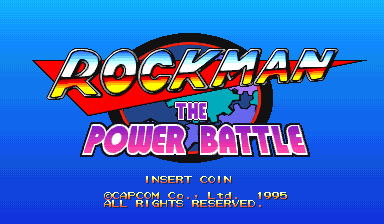 |
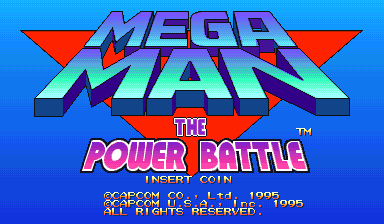 |
The Japanese version has a bit of animation (the gears behind the logo) that doesn't appear in other versions.
Rankings
| Japan | International |
|---|---|
 |
 |
The Japanese game has a unique background for the Score Ranking screen. Other versions recycle the Wily Castle map background.
| Japan | International |
|---|---|
 |
 |
The background on the Time Ranking screen is also different on the Japanese version: it shows a neon-colored Rockman: The Power Battle background that is shared with the Weapon Get screen.
Get Weapon
| Japan | International |
|---|---|
 |
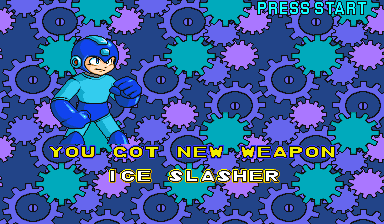 |
The Japanese Weapon Get screen uses the same background that is also seen in the Time Ranking screen. The international versions use an animated gear background based on the ones in the Japanese version's title screen.
Voices
The biggest difference between versions is the inclusion of many more character voices in the Japanese game. Any clips where the player/bosses actually speak were removed from non-Japanese variants.
Sample voices.
- Pages missing developer references
- Games developed by Capcom
- Pages missing publisher references
- Games published by Capcom
- Arcade games
- Pages missing date references
- Games released in 1995
- Games released in October
- Games with hidden development-related text
- Games with unused enemies
- Games with unused graphics
- Games with unused items
- Games with unused abilities
- Games with unused music
- Games with unused sounds
- Games with debugging functions
- Games with regional differences
- Games with revisional differences
- To do
- Mega Man series
Cleanup > Pages missing date references
Cleanup > Pages missing developer references
Cleanup > Pages missing publisher references
Cleanup > To do
Games > Games by content > Games with debugging functions
Games > Games by content > Games with hidden development-related text
Games > Games by content > Games with regional differences
Games > Games by content > Games with revisional differences
Games > Games by content > Games with unused abilities
Games > Games by content > Games with unused enemies
Games > Games by content > Games with unused graphics
Games > Games by content > Games with unused items
Games > Games by content > Games with unused music
Games > Games by content > Games with unused sounds
Games > Games by developer > Games developed by Capcom
Games > Games by platform > Arcade games
Games > Games by publisher > Games published by Capcom
Games > Games by release date > Games released in 1995
Games > Games by release date > Games released in October
Games > Games by series > Mega Man series










